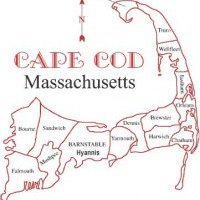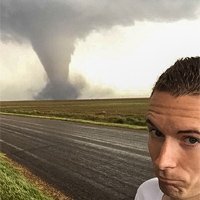Search the Community
Showing results for tags 'snowfall'.
-
Can the pattern adjust enough to permit near normal snowfall for the NYC subforum In January, at least for the interior (10-15")? Have added some statistical information regarding the potential ahead including that note from Bluewave. We do sort of know that temps are going to cool down closer to normal the first week of January. Beyond the 2 week lead time of this initial Dec 23 thread starter, that's where our long rangers add further discussion. Verification added Feb 2 for Jan. You decide for yourselves the utility of the monthly. Temp looked a little shaky MT to Lower Miss Valley. The rain was shifted west and obliterated the outlook for lower Ohio Valley. Interior I think did get near or above normal snowfall for Jan (Wantage NJ 19") but NYC CP the 2.3" was 6.5" below normal. Number of Consecutive Days Snowfall < 2 for NY CITY CENTRAL PARK, NY Click column heading to sort ascending, click again to sort descending. Rank Run Length Dates Period of record: 1869-01-01 to 2023-12-21 1 691 2022-01-30 through 2023-12-21 2 685 1972-02-24 through 1974-01-08 3 521 1918-04-13 through 1919-09-15 4 416 1912-12-25 through 1914-02-13 5 406 1997-02-09 through 1998-03-21 6 386 1991-02-27 through 1992-03-18 - 386 1954-01-12 through 1955-02-01 8 385 1931-11-28 through 1932-12-16 9 377 1971-01-25 through 1972-02-05 10 366 2006-02-13 through 2007-02-1
-
Here are a few winter outlooks. Feel free to add any others or your own thoughts https://www.noaa.gov/news-release/us-winter-outlook-warmer-drier-south-with-ongoing-la-nina This year La Niña returns for the third consecutive winter, driving warmer-than-average temperatures for the Southwest and along the Gulf Coast and eastern seaboard, according to NOAA’s U.S. Winter Outlook released today by the Climate Prediction Center — a division of the National Weather Service. Starting in December 2022 through February 2023, NOAA predicts drier-than-average conditions across the South with wetter-than-average conditions for areas of the Ohio Valley, Great Lakes, northern Rockies and Pacific Northwest.
-
Last year this one fired up in April. I think the big March snowstorm for most of us may have sated the enthusiasm for a while. The hot weather has me longing for winter and this thread is always one I look forward to just to speculate on better weather days. The La Nina watch has me excited, even though it's only around a 59%, chance for early winter La Nina. It would likely be weak and weak Nina is usually good times for the area. Moderate Nina's tend to see the Plateau and west do well, strong is more often mid-state and west. Weak tends to see a weaker SE Ridge and we generally see a good storm track Valley wide. The QBO has risen two months in a row now. So it's negative cycle is finally coming to a close it would seem. Usually it rapidly heads positive once it starts. The last time we saw the trend towards positive in May/June was 2015-16. We torched that December but had a cold and snow January that came in around 4-6 degrees BN. February came in right at normal with a really good snow event. So the rising QBO doesn't mean doom for winter. Long range models, which are notoriously volatile and inaccurate are showing either torch the whole winter or a relaxation in January towards cold. They are consistently showing the West as being the area most AN though. I'll take that, as we mostly suffer only when the West is BN. Their AN forecasts would suggest ridgeing in that region. We just don't want stubborn troughing to set up over the West. Models are generally showing continued dry weather through winter but BN precip in winter often means colder weather is around and isn't a negative for snowfall. AN precip here usually means big warm storms that just produce a lot of cold rain.
- 30 replies
-
- 6
-

-
- winter preview
- snowfall
-
(and 2 more)
Tagged with:
-

December 25th Christmas Day Snow Map Number 2 update
USCAPEWEATHERAF posted a blog entry in Once a legend always a legend
Here is the second updated map version for our storm on Monday (Christmas Day) has everyone done their Christmas shopping, I am doing mine last minute today. -
Looking at the latest 12z model data, it appears that the last week of October through the Halloween holiday and into the first few weeks of November the Teleconnections will favor trough in the east and ridge in the west type pattern where sustained cold will be possible in New England north of 40N latitude. This could mean a stormy November in which cold air sinks into the Oh Valley centered in this region the trough will allow storms to come up the East Coast to the benchmark and give us precipitation perhaps in the form of snow or rain. GEFS. GFS, EURO, CMC all favor a long range pattern that is conducive for snow and cold, just how cold will be determined by a negative anomaly in the Arctic Oscillation cycle. This negative anomaly should allow a polar vortex or a vortex from the arctic circle to focus a cold air phase into the Northeastern US by November 1st. This should be a fun period folks, especially if blocking develops over the Atlantic Ocean.
-
Here is a snowfall map that I created using reports from various sources. Many of the reports came from this forum and the National Weather Service. Only social media reports that passed through quality control were considered. All reports gathered were carefully considered and compared before being included. Light rain developed during the morning hours on November 26th and mixed with some sleet inland. Wet snow initially confined to the far northwestern corner of the state. As steadier precipitation moved in, a slight southeast shift of the snow/sleet line was observed with some modest evaporational cooling. However, much of coastal and southeastern Connecticut stayed predominantly rain. The main reason for the mixed precipitation and sleet was a warm layer in the atmosphere around 700mb. As precipitation became heavy, sleet fell across much of central Connecticut. Wet snow continued across northwestern Connecticut and rain moved as far northwest as Meriden and Hartford with some warming aloft nudging into the valleys. Even in those areas, the 2-meter temperature hovered around 34 degrees for much of the event, which did not allow for significant amounts of snow to accumulate. Precipitation tapered off to scattered snow showers by early evening. As cooler air gradually funneled in, a light additional accumulation of snow was reported in many areas. A few broken, but locally enhanced bands of snow continued into the early morning hours on the 27th. The greatest snowfall totals were in the range of 6 to 10 inches across northwestern Connecticut. Totals dropped off fairly quickly to the south and east. A narrow area of 3 to 6 inches was observed near and just northwest of I-84. Just southeast of there, 1 to 3 inches was reported and the southeastern third of the state generally saw less than one inch of snow. Where the snow did accumulate, it had a very high water content, especially those areas that battled between a mixture of snow, sleet and rain.
-
- Connecticut
- snowfall
-
(and 1 more)
Tagged with:
-
Here is a snowfall map that I created using reports from various sources. Many of the reports came from this forum and the National Weather Service. Only social media reports that passed through quality control were considered. All reports gathered were carefully considered and compared before being included. Light rain, with light snow across the higher elevations, developed across Connecticut during the evening hours of November 13th. The steadiest and heaviest snow fell around midnight and tapered off during the pre-dawn hours on November 14th. Most locations eventually changed to snow, with the exception being the immediate shoreline and urban coastal corridor from New Haven down toward the New York border. On average, the hills saw anywhere from 1 to 3 inches of snow, with generally an inch or less across the valleys and shoreline. The highest amounts around and just over 3 inches were reported in Litchfield County.
-
- Connecticut
- snowfall
-
(and 1 more)
Tagged with:


